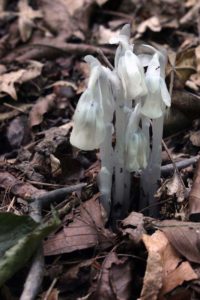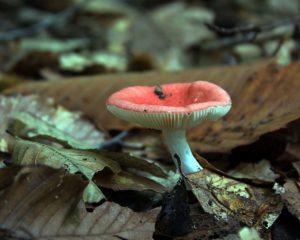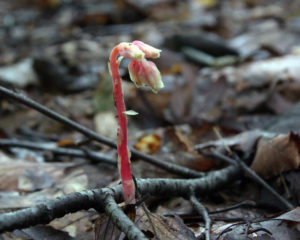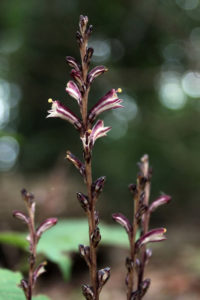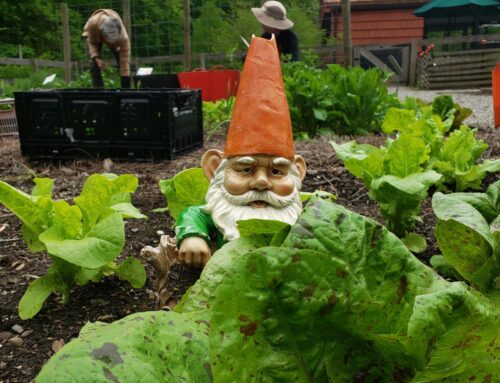All flowering plants are green, right? Not if the plant is parasitic — specifically parasitic on mushrooms. It’s that time of the year that you can start to see examples of this type of plant in the woods at Tyler.
Walk the Blue Trail and keep an eye out on the stream-side of the path for ghostly white or pale pink pushing through the leaf litter. It might be a mushroom, but it could be the mushroom parasite, the ghost plant or Indian pipe, Monotropa uniflora. The ghost plant is an ephemeral perennial plant native to all but a few southwestern states in the US. The entire plant is a waxy translucent white commonly with black flecks, but sometimes it’s a pale pinkish-white because it contains no chlorophyll. Each stem bears a single flower that nods over but becomes upright as the seeds mature.
It is parasitic on the Russulaceae mushrooms, commonly called brittle gills, from which it gets its energy. You will see the ghost plant associated with beech trees since the brittle gill mushrooms, and beech trees have a mycorrhizal relationship which is symbiotic or beneficial for both. It’s the beech tree doing all the photosynthesis and sharing directly with the mushroom and indirectly with the Ghost Plant. Because of this relationship, the Ghost Plant can grow in the dense shade of the mature summer canopy.
Less common in the Tyler woods is the Pinesap, Monotropa hypopitys. Sometimes called Dutchman’s pipe, it lives in a similar plant-mushroom-tree relationship. This time the mushroom is Tricholoma genus, which is a large group of fleshy, gilled mushrooms. The tree, as the common name suggests, is generally pine or conifers. Pinesap lives underground until early summer when individuals with enough stored energy will throw up what looks like a stem covered in flowers. The plant is usually yellowish flowering in the summer but sometimes red and flowering in fall. This might indicate that they could be two separate subspecies, but the research is still to be done.
While you are looking for the ghost plant near the many beech trees, see if you can spot any beech drops, Epifagus virginiana, as well. This is another parasitic plant that relies completely on the host to develop and complete its life cycle as it attaches to the roots of the beech tree. The beech roots give off a chemical that helps germinate the seeds of the beech drops. Older trees are believed to give off more of this chemical, so larger groups of the parasite may be seen there. Cross pollinated flowers grow at the top of the stem and self-pollinated flowers are below. This ensures that the plant will persist with or without pollinators.The beech drop is an annual plant with white and purple stems in clusters that is just 7-8 inches tall. It flowers in the late summer/early fall but be prepared to get really close in order to see them.
If you needed a reason to explore outside the fence at Tyler, these plants could fit the bill but don’t delay. They won’t last long!


